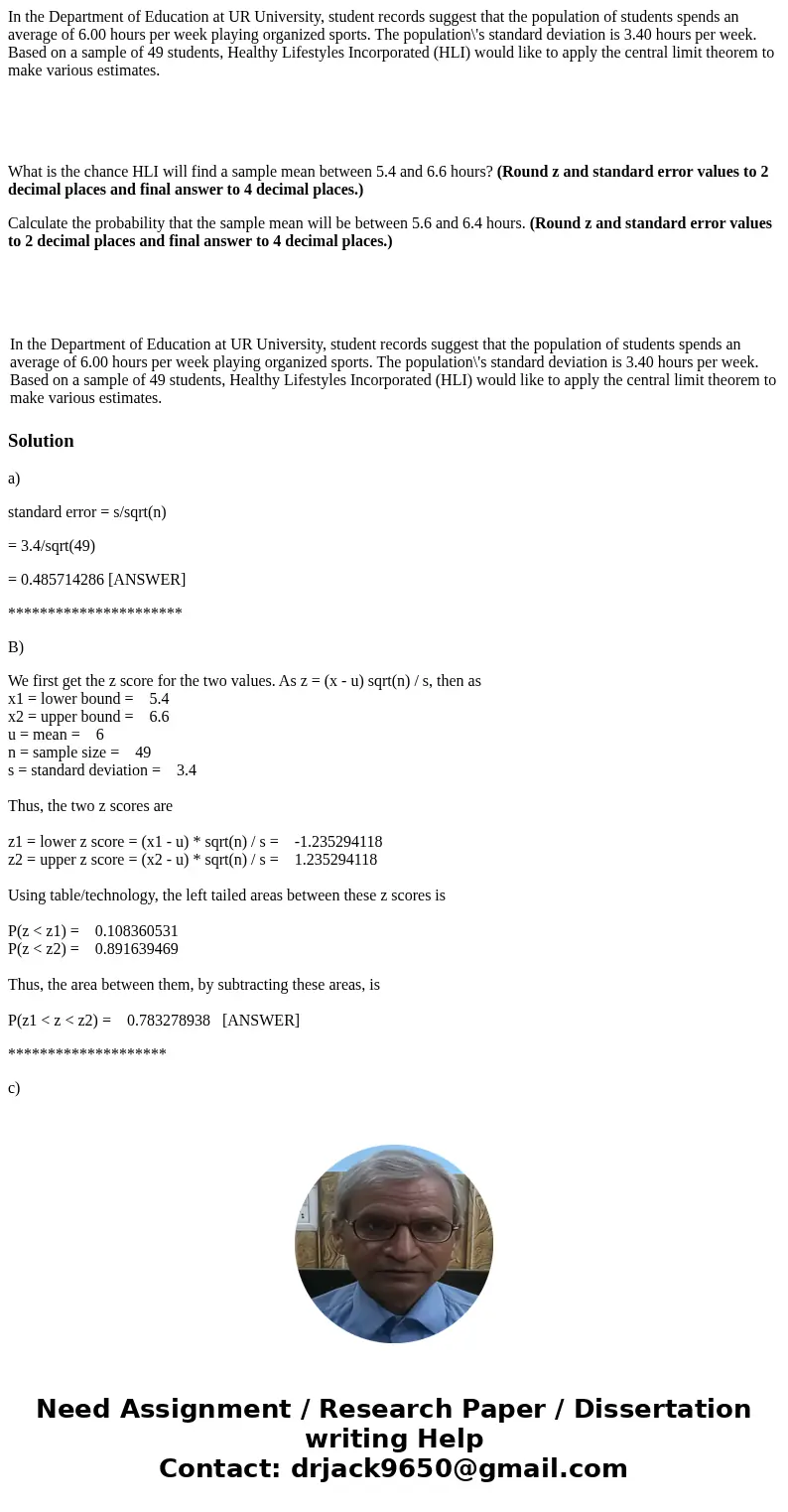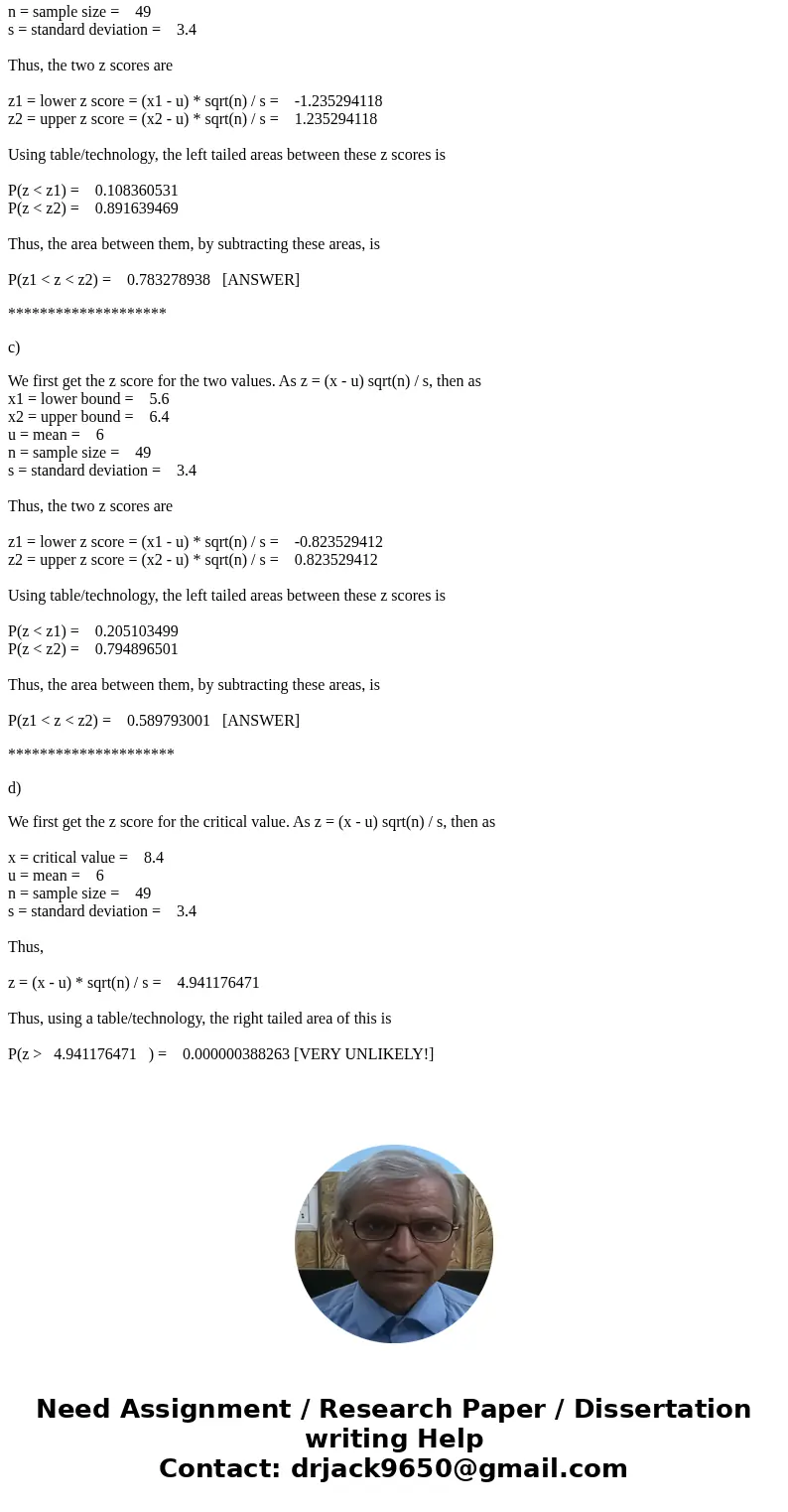In the Department of Education at UR University student reco
In the Department of Education at UR University, student records suggest that the population of students spends an average of 6.00 hours per week playing organized sports. The population\'s standard deviation is 3.40 hours per week. Based on a sample of 49 students, Healthy Lifestyles Incorporated (HLI) would like to apply the central limit theorem to make various estimates.
What is the chance HLI will find a sample mean between 5.4 and 6.6 hours? (Round z and standard error values to 2 decimal places and final answer to 4 decimal places.)
Calculate the probability that the sample mean will be between 5.6 and 6.4 hours. (Round z and standard error values to 2 decimal places and final answer to 4 decimal places.)
| In the Department of Education at UR University, student records suggest that the population of students spends an average of 6.00 hours per week playing organized sports. The population\'s standard deviation is 3.40 hours per week. Based on a sample of 49 students, Healthy Lifestyles Incorporated (HLI) would like to apply the central limit theorem to make various estimates. |
Solution
a)
standard error = s/sqrt(n)
= 3.4/sqrt(49)
= 0.485714286 [ANSWER]
**********************
B)
We first get the z score for the two values. As z = (x - u) sqrt(n) / s, then as
x1 = lower bound = 5.4
x2 = upper bound = 6.6
u = mean = 6
n = sample size = 49
s = standard deviation = 3.4
Thus, the two z scores are
z1 = lower z score = (x1 - u) * sqrt(n) / s = -1.235294118
z2 = upper z score = (x2 - u) * sqrt(n) / s = 1.235294118
Using table/technology, the left tailed areas between these z scores is
P(z < z1) = 0.108360531
P(z < z2) = 0.891639469
Thus, the area between them, by subtracting these areas, is
P(z1 < z < z2) = 0.783278938 [ANSWER]
********************
c)
We first get the z score for the two values. As z = (x - u) sqrt(n) / s, then as
x1 = lower bound = 5.6
x2 = upper bound = 6.4
u = mean = 6
n = sample size = 49
s = standard deviation = 3.4
Thus, the two z scores are
z1 = lower z score = (x1 - u) * sqrt(n) / s = -0.823529412
z2 = upper z score = (x2 - u) * sqrt(n) / s = 0.823529412
Using table/technology, the left tailed areas between these z scores is
P(z < z1) = 0.205103499
P(z < z2) = 0.794896501
Thus, the area between them, by subtracting these areas, is
P(z1 < z < z2) = 0.589793001 [ANSWER]
*********************
d)
We first get the z score for the critical value. As z = (x - u) sqrt(n) / s, then as
x = critical value = 8.4
u = mean = 6
n = sample size = 49
s = standard deviation = 3.4
Thus,
z = (x - u) * sqrt(n) / s = 4.941176471
Thus, using a table/technology, the right tailed area of this is
P(z > 4.941176471 ) = 0.000000388263 [VERY UNLIKELY!]


 Homework Sourse
Homework Sourse